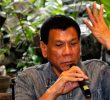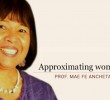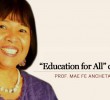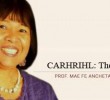This piece was part of an attempt to contribute to public policy review specific to education submitted to the Committee on Education of the House of Representatives that held a public hearing in Davao City on K to 12 in 2012.
To date, schools have signified their readiness to K to 12 with the passage of the law that allows its full implementation. Undeniably, a movement to change the educational system prevails with its perspective bigger than the K to 12 hence some groups are hopeful for a delay in its implementation. I rather stay to a further appreciation of strengthening kindergarten programming with economic and socio-cultural systems change than tinkering on the high school cycle. A quick account of the introduction of K to 12 in the country would be in order.
The K-12 is an education policy Benigno Aquino, III has been tagging along even before his assumption to power. It is a policy recommendation contained in the Philippine National Action Plan for EFA (Education for All) 2015 Goals (Philippine EFA 2015), which was formulated in 2005. It was more than a decade ago, one of the recommendations of the Philippine Education Sector Study funded by the Asian Development Bank in 1997 was for the government to strengthen and allot more resources to basic education by lessening its exposure in tertiary education.
The available study using international standards FOR MATH AND SCIENCE is the Trends in Math and Science Study (TIMSS). Accordingly, Trends in Math and Science Study (TIMSS) was created through an extensive collaboration among participating countries, the Philippines included. Curriculum, measurement, and education experts from around the world worked together to create the assessment frameworks, item pools, and questionnaires. TIMSS is based on the curricula of schools around the world, and is organized to investigate how students are provided educational opportunities, and the factors that influence how students make use of these opportunities. Having its basis in the curricula of schools around the world, TIMSS intends to investigate three levels: the intended curriculum; the implemented curriculum; and the achieved curriculum. The intended curriculum is defined as the mathematics and science that societies intend for students to learn and how education systems are organized to meet this demand; the implemented curriculum is what is actually taught in classrooms, who teaches it, and how it is taught; the achieved curriculum is what students have learned. The various questionnaires seek information on the intended and implemented curriculum; the assessment seeks to ascertain what students know (http://en.wikipedia.org/wiki/TIMSS).
It is unfortunate that this measurement is the primary basis for the decision of an education policy direction by the present administration.
It is a critical point for the Philippine educators not to be misled by this study. Our Philippine educational system itself is a principal factor that should be comprehensively understood by all stakeholders. It is our own realities that must dictate upon us what to do with Philippines’ low scores in the TIMSS results than to lengthen any education sub-cycle. The physical infrastructures that are badly needed to create conducive learning environment (equipped school buildings, comfortable chairs, laboratories, learning aids, etc), valuing much on social infrastructure (curriculum contents, methods of instruction and learning processes, teachers’ training) and teachers’ support for decent wages and benefits all redound to the urgent increase in education budget for the benefit of the young people and children.










